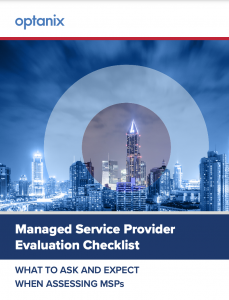
What to Look for in Your Managed Network Services Agreement
A managed network services agreement, sometimes called a managed service provider agreement, serves as a binding contract between the customer consuming the managed network service (MNS) and the managed service provider (MSP) delivering it. These agreements outline the quality, availability and responsibilities associated with service delivery and upkeep. They also set clear guidelines for the services to be delivered and expected service levels.
Benefits of contracting your MNS to an MSP
From the customer’s perspective, leveraging an MSP for MNS brings huge benefits. To start with, the onus of maintaining a dedicated in-house IT team (and accompanying operations centers) is offloaded to the MSP. This allows companies to focus on their core business, rather than be distracted financially and operationally by the need to build and maintain services.
However, these benefits do not come without risks. As business has become increasingly digital, the dependency on these network services is immense. Any disruption can have a devastating impact to the business – both financial and reputational.
The key to mitigating this risk lies in being able to understand your managed network service level agreement (SLA), also referred to as a network managed services scope of work.
In this blog post, we outline the essential items you must look for in an MNS SLA to ensure you will receive the support your business needs from the MSP presenting the agreement.
 Need insight on evaluating a managed service provider for your organization? Download this MSP Evaluation Checklist to ensure you select the best partner.
Need insight on evaluating a managed service provider for your organization? Download this MSP Evaluation Checklist to ensure you select the best partner.
What to Look for in Your MNS Agreement
Here are a few key elements to consider for your MNS agreement:
Service Description, or Scope of Work
The MNS scope of work, or service description, provides a clear definition of what constitutes the service that the MSP is providing. If there are multiple aspects to the delivery, make sure they are clearly outlined and defined. The service description should also clearly outline the duties and responsibilities of each party.
Service-Level Agreements (SLAs)
MSP service-level agreements (SLAs) are perhaps the most vital component of MNS agreements. They define:
- what the performance of the services delivered by the MSP should be,
- how this performance can be measured
- what the response time should be when things go awry
Be sure to carefully review the following aspects of an SLA before contracting with an MSP:
- Expected Service Levels: Look for the definition of “uptime” or “downtime” and especially the mention of availability. For example, make sure the service guarantees an availability of 99.999% over the course of the month. Look for what is defined as “routine maintenance” and what falls outside of that category.
- Monitoring and Metrics: This refers to the data that is used to confirm the service availability – the way the service is measured. Have a clear idea of what benchmarks will be used to measure a baseline against. Make sure it’s clear how these metrics will be shared and communicated between the two parties.
- Response Times and Responsibilities: SLAs must clearly outline the response time for outages. How fast will the MSP respond to address issues? Are there severity levels defined for different kinds of issues? Is there round-the-clock support from the MSP? What kind of escalation path is available?
Access and Security
The MSP will need to access the infrastructure estate in the customer environment. This brings about serious considerations around how this access is provided and also the kinds of security measures being leveraged to protect the interests of the customer. Your MNS agreement must provide details on exactly how these objectives are achieved.
Beyond MSP SLAs: Business Impact Management
A lot of what is described in SLAs is about the technological plane – the need to monitor service levels and rapidly assess, diagnose and remediate issues in the delivery infrastructure as they occur. But there is a whole world of value that the MSP can provide that goes beyond this, into the business impact of the services under their management.
It’s all about mapping the services provided onto the technology infrastructure that delivers it. This provides a business-centric view. The benefits to the customer are immense in terms of providing true situational awareness when there is a problem with the underlying infrastructure.
MSPs with the capability to include this level of abstraction in an SLA clearly stand out from the pack and provide a superior level of customer satisfaction.
As an IT organization, your business runs on the services your MSP manages. A capable MSP is more than a vendor – they are a true partner with a huge investment in your business outcomes. The MNS agreement that binds you to the MSP is the key document that enables this relationship. It pays to have a clear understanding of these agreements, and to revise it as your goals as a customer change.